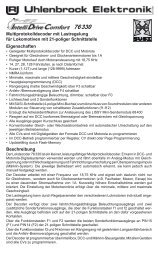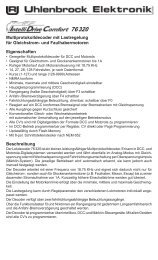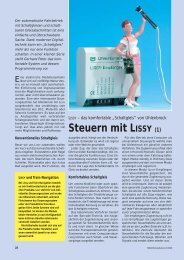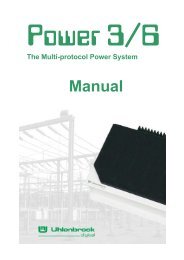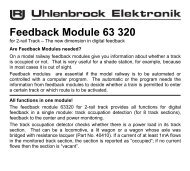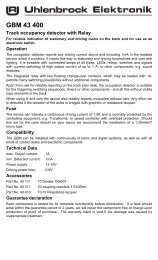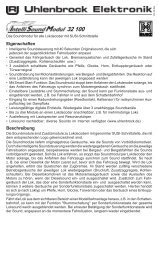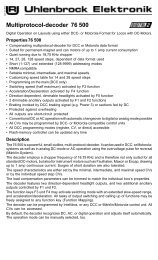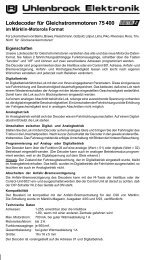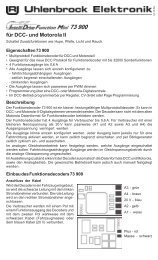Untitled - Uhlenbrock
Untitled - Uhlenbrock
Untitled - Uhlenbrock
You also want an ePaper? Increase the reach of your titles
YUMPU automatically turns print PDFs into web optimized ePapers that Google loves.
7.4.4 Basic operation Block sectionsMARCoTo protect a section of track with a signal, so that entry signal S2 prevents a subsequent trainfrom entering the block section, if it is already occupied. The train in this block section isaffected by exit signal S3. This signal depends on the condition of the following block sectionand becomes controlled manually or automatically.With this basic operation for a block system a longer track distance is divided into severalblocks, which can be traversed automatically. For a meaningful, automatically controlled blocksystem, it must consist of at least 3 blocks. A block system can always control one train lessthan the number of blocks. The behaviour of a locomotive in a block depends on the state ofthe exit signal at the end of the Block, which is also the entry signal for the next block. Forautomatic operation one MARCo-Receiver is needed per block.The following operational sequence shows how each MARCo receiver, in an automatic blocksystem, is programmed. It assumes that the signal at the end of the block is red:• The locomotive passes the detectors of the MARCo-Receiver and therefore completelyenters the Block with the signal S3.• The signal S3 at the end of the block is red, the locomotive brakes and stops.• The signal S2 of the previous block, from which the locomotive came, is also set to red (thishappens as a matter of course).• The signal S1 of the block before, which is now vacant, is set to green (this happens as amatter of course).• The MARCo-Receiver monitors the signal S3 and waits for it to be set to green by anotherdevice attached to the LocoNet (Intellibox, IB-control, DAISY, IB-Switch or a computerprogram via the Intellibox), an instruction from a route (Intellibox or IB-Switch) or anotherMARCo receiver.• If the signal turns green S3, e.g. is switched by a MARCo receiver, 2 blocks ahead in thetravelling direction, the locomotive accelerates to its original speed again and proceeds intothe next block• As soon as the train is completely in the next block, the signal S3 must be set back to red,e.g. by the MARCo receiver, that controls the following block.47




